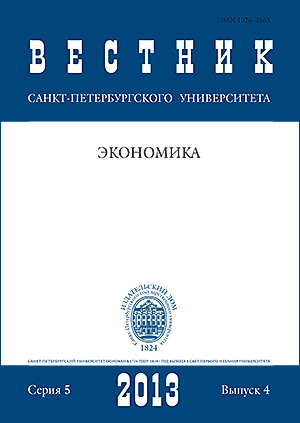Economic Dynamics Across Countries in 1992–2010: Growth Divergence
Abstract
The concept of economic growth is one of the most sought aft er and is of interest of not only economists. The authors of the article attempted to carry out their own test for convergence of economic growth across countries over period of 1992–2010. The analysis had three main issues: 1) whether the “neighbors” became closer to each other in terms of development over period of 18 years, and 2) whether there is a convergence
of development levels on a larger space — countries over the world, and 3) what path Russian economy made in this period among 150 countries in 1992–2010. This picture, in our opinion, should be taken into account to form perceptions of modern development and to understand, what “stylized” facts theorems of the global economy should be based on.
Keywords:
economic growth, convergence, cultural factors, modernization trajectory
Downloads
References
References in Latin Alphabet
Translation of references in Russian into English
Downloads
Published
How to Cite
Issue
Section
License
Articles of the St Petersburg University Journal of Economic Studies are open access distributed under the terms of the License Agreement with Saint Petersburg State University, which permits to the authors unrestricted distribution and self-archiving free of charge.






